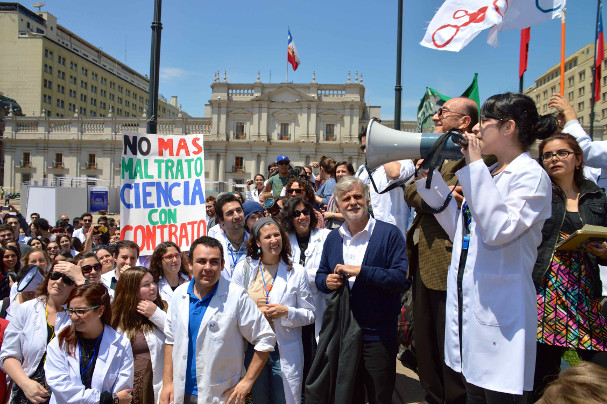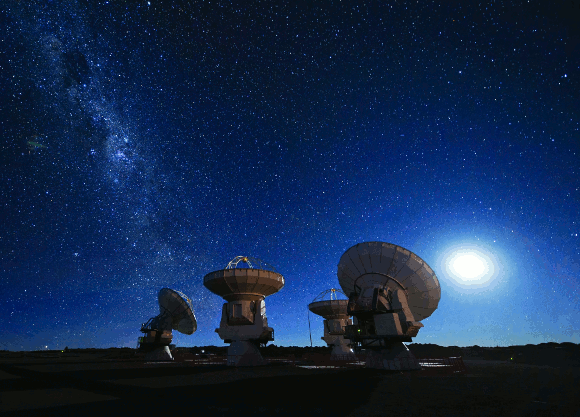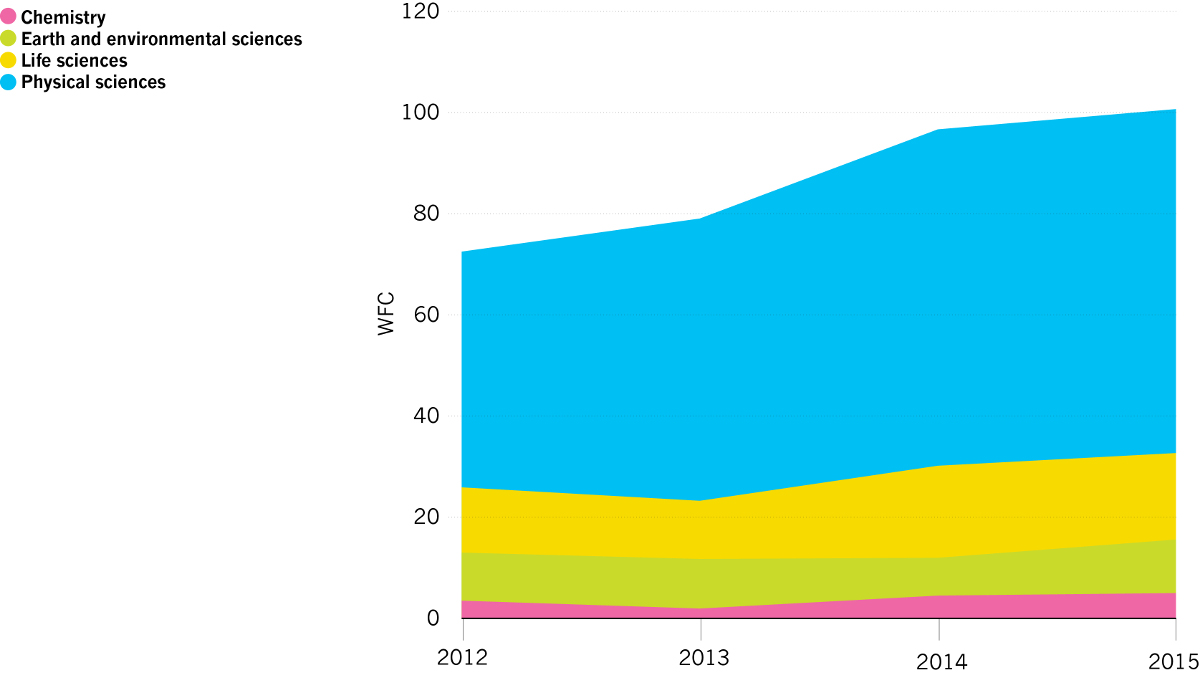
Chilean scientists rally at the Government Palace in Santiago, to protest the government's poor research investment, significantly less than the proportion spent by its neighbours. Credit: Osvaldo Contreras/Fundacion Mas Ciencia
Chilean research grows despite poor investment
5 August 2016

Osvaldo Contreras/Fundacion Mas Ciencia
Chilean scientists rally at the Government Palace in Santiago, to protest the government's poor research investment, significantly less than the proportion spent by its neighbours.
Despite funding constraints, Chilean research is growing in some areas.
Last year, thousands of scientists, technicians and students took to the streets to protest the Chilean government's poor research investment. According to the World Bank, the most recent data available (2012) show that Chile spent less than 0.5% of its GDP on R&D — significantly less than the 1.15% by Brazil and Argentina's 0.58%. About 80% of scientific research in Chile is publicly funded.
Despite limited investment, Chile's contribution to physical sciences research in the index grew by almost 40% between 2012 and 2015. Thanks to the clear skies of the Atacama Desert, the country hosts some of the world's biggest telescopes, including the European Southern Observatory's Very Large Telescope and the Atacama Large Millimetre Array.

Four antennae of the Atacama Large Millimetre Array in Chile. Credit: ESO/Jose Francisco Salgado
But Chilean research is growing in areas besides astronomy. Researchers discovered a new dinosaur, a raptor-like vegetarian relative of Tyrannosaurus rex, that lived during the Late Jurassic period. 'Chilesaurus', became one of the most sensational palaeontology stories of 2015 with the findings published in Nature.
“We experience the frustration of producing top-notch work, yet being unable to obtain the funding we need to research and protect our fossil heritage,” says a researcher at the University of Chile, Alex Vargas, one of the team that documented Chilesaurus. “The University of Chile has been our main support. It recognized our excellence.” This recognition, Vargas says, came through direct grants and by help with application for larger grants from other funding sources.

Alisdair Macdonald
A strong focus on astronomy helped boost Chile’s physical sciences WFC between 2012 and 2015. Full size imageChile's National Commission for Scientific and Technological Research (CONICYT), a funding agency, is part of the Ministry of Education and acts in lieu of a science ministry. In the past, the commission has been responsible for more than 50% of publicly funded science research in Chile; in 2016, it had a budget of US$442 million.
Mario Hamuy, an astronomer at the University of Chile and chairman of CONICYT, says public investment in scientific research overall has more than doubled since 2007, and that the budget for fundamental research has tripled. Chilean president, Michelle Bachelet, also gave Hamuy the job of creating a science and technology ministry that would define and implement policies.
By Tim Hornyak

